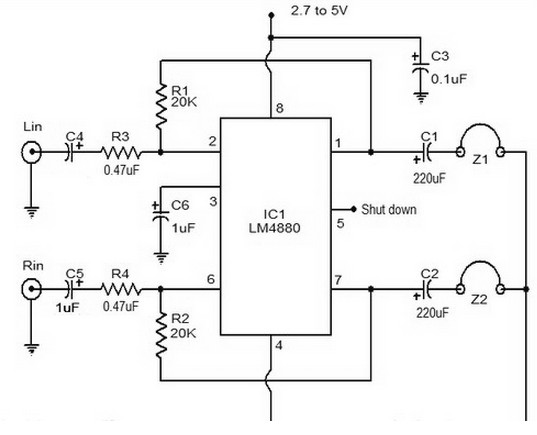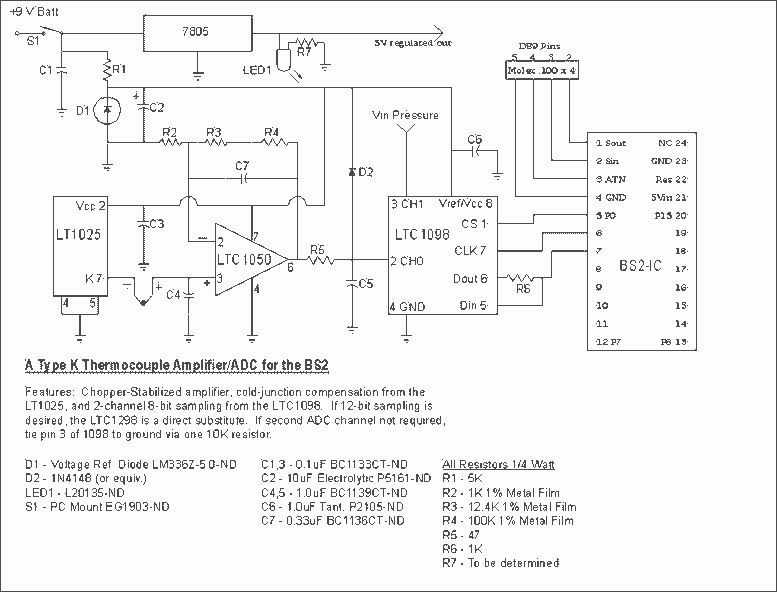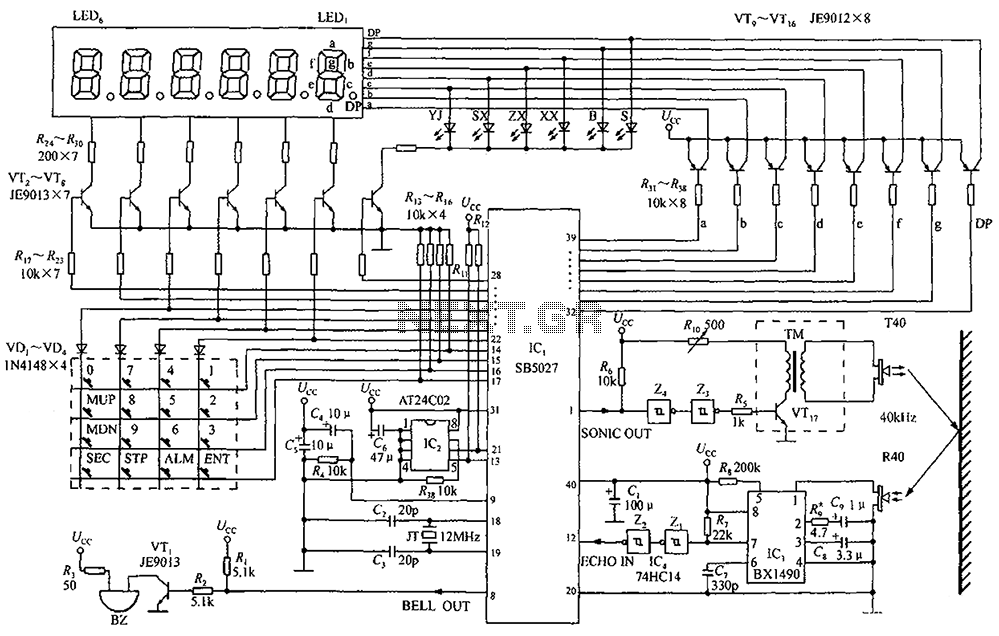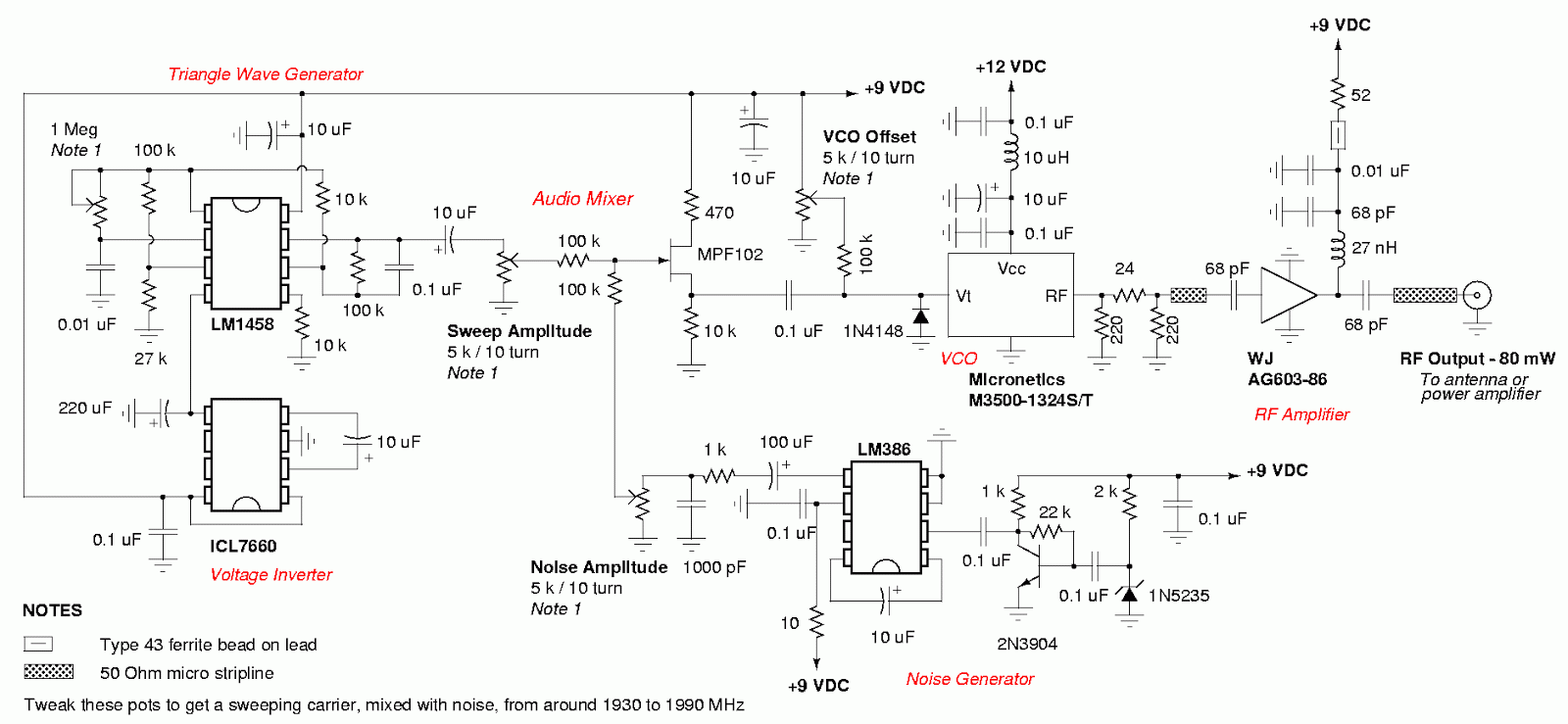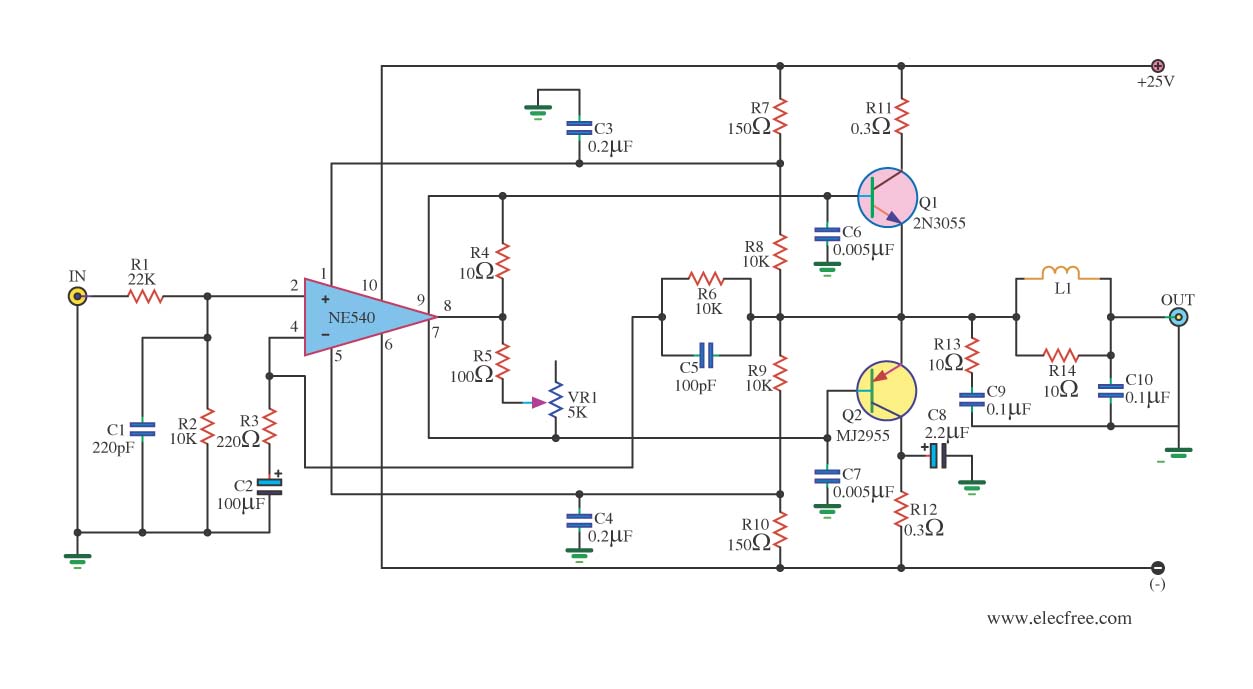
simple booster tv schematic diagram
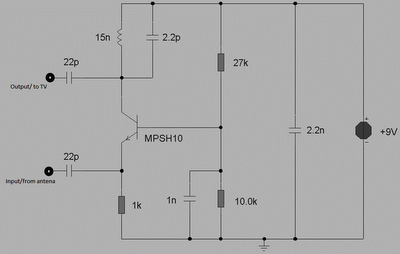
This circuit is designed to enhance RF signals from a television antenna operating at UHF frequencies in the range of 450-800 MHz. It provides a gain of approximately 10 dB, making it suitable for boosting weak TV signals. The tuned circuit consists of a 15 nH inductor and a 2.2 pF capacitor, which resonate at the center of the UHF band. The 2.2 pF capacitor can be replaced with a 4.7 pF capacitor or a trimmer capacitor in the range of 2-6 pF to optimize performance. The approximate frequency response is illustrated below. Note that this response is simulated using the TINA program, based on a swept input of 20 µV across the frequency range of 400-800 MHz. The output was measured into a 1 kΩ source, and the frequency generator was set to a 75 Ω impedance.
The RF amplifier circuit designed for UHF television signals employs a tuned circuit configuration to maximize signal strength and clarity. The core components include a 15 nH inductor and a 2.2 pF capacitor, which together form a resonant circuit. This configuration is critical for effectively amplifying signals within the specified frequency range of 450-800 MHz.
The gain of approximately 10 dB indicates that the circuit can significantly improve the reception of weak signals, which is particularly beneficial in areas with poor signal strength. The choice of components is essential; the inductor and capacitor must be precisely selected to ensure that they resonate at the desired frequency. The option to substitute the 2.2 pF capacitor with a 4.7 pF capacitor or a variable trimmer capacitor allows for fine-tuning of the circuit, enabling users to adjust the resonance frequency for optimal performance based on their specific signal environment.
The simulated frequency response, generated using the TINA software, provides valuable insights into the performance of the circuit. By sweeping an input signal of 20 µV across the frequency range of 400-800 MHz, the simulation offers a graphical representation of how the circuit responds to various frequencies. The measurement into a 1 kΩ load reflects realistic operating conditions, while the 75 Ω impedance of the frequency generator aligns with standard RF practices. This simulation serves as a predictive tool, allowing engineers to assess the circuit's effectiveness before physical implementation.
Overall, this RF amplifier circuit is a practical solution for enhancing UHF television signals, combining a simple yet effective design with adjustable components to cater to varying reception conditions.This is circuit that can be used to strengthen the RF signals from a television antenna work at UHF frequencies in the range 450-800MHz. It has a gain of around 10dB and is suitable for boosting weak TV signals The tuned circuit comprising the 15nH inductor and 2.
2pF capacitor resonate in the center of the UHF band. The 2. 2pF capacitor may be Exch anged for a 4. 7pF or a Trimmer capacitor of 2-6pF to improve results. The approximate frequency response is shown below. N. B. This is a simulated response using the TINA program produced by using a swept input 20uV swept over the frequency range 400-800MHz. Output was measured into a 1k source and the frequency generator has a 75ohm impedance. 🔗 External reference
The RF amplifier circuit designed for UHF television signals employs a tuned circuit configuration to maximize signal strength and clarity. The core components include a 15 nH inductor and a 2.2 pF capacitor, which together form a resonant circuit. This configuration is critical for effectively amplifying signals within the specified frequency range of 450-800 MHz.
The gain of approximately 10 dB indicates that the circuit can significantly improve the reception of weak signals, which is particularly beneficial in areas with poor signal strength. The choice of components is essential; the inductor and capacitor must be precisely selected to ensure that they resonate at the desired frequency. The option to substitute the 2.2 pF capacitor with a 4.7 pF capacitor or a variable trimmer capacitor allows for fine-tuning of the circuit, enabling users to adjust the resonance frequency for optimal performance based on their specific signal environment.
The simulated frequency response, generated using the TINA software, provides valuable insights into the performance of the circuit. By sweeping an input signal of 20 µV across the frequency range of 400-800 MHz, the simulation offers a graphical representation of how the circuit responds to various frequencies. The measurement into a 1 kΩ load reflects realistic operating conditions, while the 75 Ω impedance of the frequency generator aligns with standard RF practices. This simulation serves as a predictive tool, allowing engineers to assess the circuit's effectiveness before physical implementation.
Overall, this RF amplifier circuit is a practical solution for enhancing UHF television signals, combining a simple yet effective design with adjustable components to cater to varying reception conditions.This is circuit that can be used to strengthen the RF signals from a television antenna work at UHF frequencies in the range 450-800MHz. It has a gain of around 10dB and is suitable for boosting weak TV signals The tuned circuit comprising the 15nH inductor and 2.
2pF capacitor resonate in the center of the UHF band. The 2. 2pF capacitor may be Exch anged for a 4. 7pF or a Trimmer capacitor of 2-6pF to improve results. The approximate frequency response is shown below. N. B. This is a simulated response using the TINA program produced by using a swept input 20uV swept over the frequency range 400-800MHz. Output was measured into a 1k source and the frequency generator has a 75ohm impedance. 🔗 External reference
